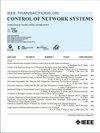电网树分区的混合整数线性规划方法
IF 5
3区 计算机科学
Q2 AUTOMATION & CONTROL SYSTEMS
引用次数: 0
摘要
在输电网中,由于潮流物理的原因,潮流和网络拓扑结构紧密地交织在一起。最近的文献表明,一个特定的更分层的网络结构可以有效地抑制线路故障在整个系统中的传播。特别是,已经提出了一种名为树划分的新方法,该方法旨在通过有针对性的线路交换行动来实现网络拓扑的战略性改变,从而增强电网的鲁棒性。考虑潮流中断和网络拥塞等不同的目标,提出了几种树划分问题的表述。此外,还提出了基于两阶段和递归方法的各种启发式方法。本文为基于混合整数线性规划(MILP)的树划分问题提供了一个通用框架。特别地,我们提出了一个新的MILP公式来最优地解决树划分问题,并提出了一个基于MILP的两阶段启发式算法。我们进行了大量的数值实验来解决两个树划分问题的变体,证明了我们的解决方法的优异性能。最后,通过详尽的级联故障模拟,我们比较了各种树分区策略的有效性,并表明,平均而言,与原始拓扑相比,它们可以大大减少负载损失。本文章由计算机程序翻译,如有差异,请以英文原文为准。
Mixed-Integer Linear Programming Approaches for Tree Partitioning of Power Networks
In transmission networks, power flows and network topology are deeply intertwined due to power flow physics. Recent literature shows that a specific more hierarchical network structure can effectively inhibit the propagation of line failures across the entire system. In particular, a novel approach named tree partitioning has been proposed, which seeks to bolster the robustness of power networks through strategic alterations in network topology, accomplished via targeted line-switching actions. Several tree-partitioning problem formulations have been proposed by considering different objectives, among which power flow disruption and network congestion. Furthermore, various heuristic methods based on a two-stage and recursive approach have been proposed. The present work provides a general framework for tree-partitioning problems based on mixed-integer linear programming (MILP). In particular, we present a novel MILP formulation to optimally solve tree-partitioning problems and also propose a two-stage heuristic based on MILP. We perform extensive numerical experiments to solve two tree-partitioning problem variants, demonstrating the excellent performance of our solution methods. Lastly, through exhaustive cascading failure simulations, we compare the effectiveness of various tree-partitioning strategies and show that, on average, they can achieve a substantial reduction in lost load compared to the original topologies.
求助全文
通过发布文献求助,成功后即可免费获取论文全文。
去求助
来源期刊

IEEE Transactions on Control of Network Systems
Mathematics-Control and Optimization
CiteScore
7.80
自引率
7.10%
发文量
169
期刊介绍:
The IEEE Transactions on Control of Network Systems is committed to the timely publication of high-impact papers at the intersection of control systems and network science. In particular, the journal addresses research on the analysis, design and implementation of networked control systems, as well as control over networks. Relevant work includes the full spectrum from basic research on control systems to the design of engineering solutions for automatic control of, and over, networks. The topics covered by this journal include: Coordinated control and estimation over networks, Control and computation over sensor networks, Control under communication constraints, Control and performance analysis issues that arise in the dynamics of networks used in application areas such as communications, computers, transportation, manufacturing, Web ranking and aggregation, social networks, biology, power systems, economics, Synchronization of activities across a controlled network, Stability analysis of controlled networks, Analysis of networks as hybrid dynamical systems.
 求助内容:
求助内容: 应助结果提醒方式:
应助结果提醒方式:


